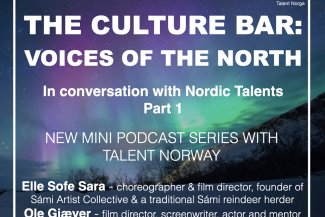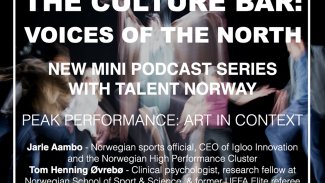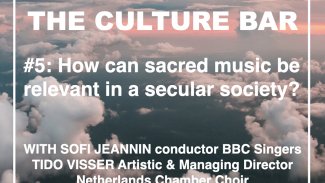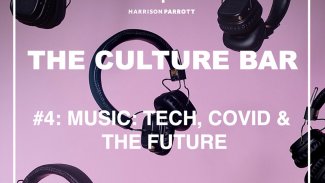THE CULTURE BAR: VOICES OF THE NORTH — In conversation with Nordic Talents Part 1
16/12/2020

Voices of the North
We are excited to share with you our second podcast in the new series ‘Voices of the North’ podcast mini-series in collaboration with Talent Norway and Sparebank1 Nord-Norge, Samfunnsløftet
In episode No.2 ‘Conversations with Nordic talents and their mentors’ Elle Sofe Sara: a Sámi film director from Kautokeino’ we listen to a conversation between a Nordic talent and a mentor from the Talent Norway programme ‘Mer Film’. Mer Film is a programme aimed at young, talented film directors from the Northern parts of Norway.
We are joining Elle Sofe and her mentor Ole in Kautokeino in one of their working sessions on her new feature film project and discuss how the Sámi culture has inspired their artistic endeavours.
Guests:
- Elle Sofe Sara (choreographer and film director, founders of the Sámi artist collective and a traditional Sámi reindeer herder)
- Ole Giæver (film director, screenwriter, actor and mentor)
Hosted by HarrisonParrott’s Karoline Melstveit.
Voices of the North is a part of the agreement and collaboration between Talent Norge and SpareBank 1 Nord-Norge, Samfunnsløftet. Together they ensure that exceptional talents have access to artistic support programmes where they live.
The Culture Bar is a podcast series created by HarrrisonParrott focussing on culture and the arts.
Find us on Spotify, iTunes, Google Podcasts, YouTube, Podbean, Deezer and all good podcatcher sites.
#theculturebar #voicesofthenorth
A special thank you to Robert Cochrane as the composer of the theme tune music, and Merlyn Thomas our editor.


